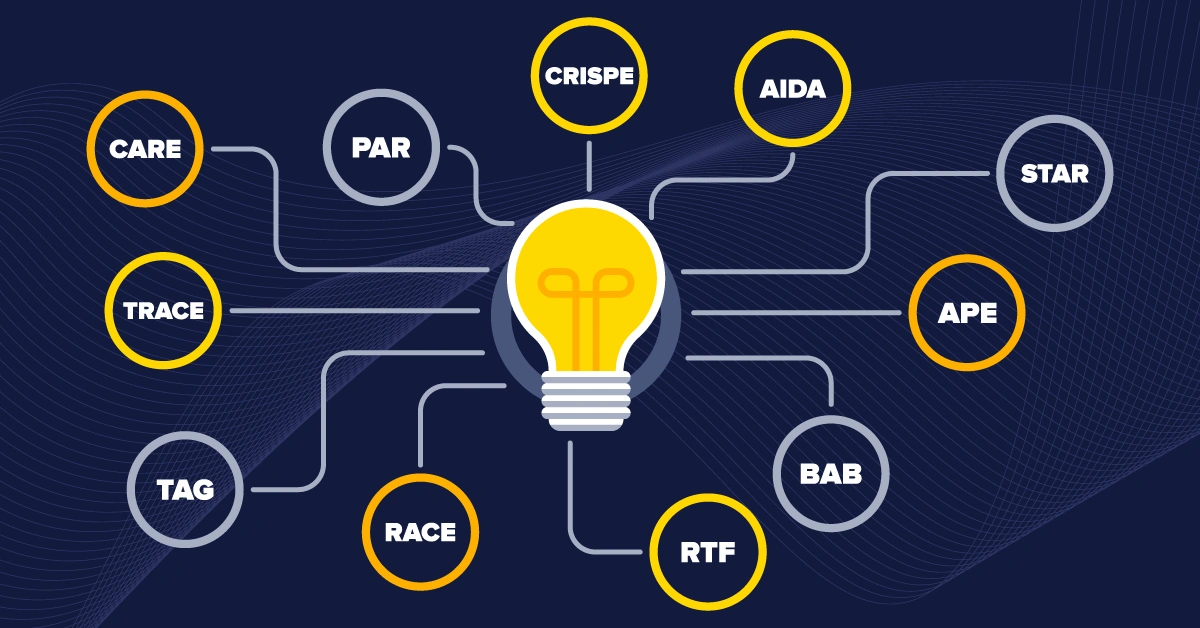
GSD
11 ChatGPT Prompt Frameworks Every Marketer Should Know
Posted by Maab Saleem on September 24, 2024
If a 24-hour day seems to always fall short for you, chances are you might be a marketer. It’s not easy juggling multiple campaigns, planning content strategies, churning out copy, creating customer profiles, and researching keywords.
Soon the work starts piling up and you are just one push away from burnout…
And that’s why ChatGPT was like a breath of fresh air for most marketers. The AI-powered chatbot can read, write, analyze, strategize, and predict.
But only those who are savvy with prompt engineering can harness its full potential. That's exactly why this blog post is all about ChatGPT prompt frameworks. These are like guides that ensure consistently helpful AI output and a boost in productivity.
And even though the term may sound technical, the frameworks in this blog post are easy to understand and implement.
So let’s get started.
Table of contents
What are Chatgpt prompt frameworks?
Before we discuss ChatGPT prompt frameworks, let’s start with the basics…
What is a prompt? A prompt is any question, instruction, or description that is provided to AI. The AI interprets the prompt and responds accordingly.
Here is an example of a ChatGPT prompt and its response:
Now, what is a ChatGPT prompt framework? Most marketing tasks are not as simple as asking the year ChatGPT was introduced. Ideas for content, for example, can differ vastly depending on the prompt. That’s where frameworks come in.
ChatGPT prompt frameworks are guidelines that provide instructions and context to the AI tool to ensure that its output is accurate, relevant, and efficient. These frameworks help you engineer prompts that will get you the output you were looking for — they’re basically a Chat GPT prompt cheat sheet!
Like most generative AI, ChatGPT can be only as good as the prompt you provide it. Without an advanced prompt, ChatGPT’s output can be generic, inefficient, and usually unusable. But how do you create these prompts? With a clear framework, you can bend ChatGPT at your will –- generate content strategy, customer persona outlines, tone of voice guidelines, and more.
Why should marketers use prompt frameworks?
According to a survey by HubSpot, almost 64% of marketers use artificial intelligence for their jobs in some way. The purpose and level of integration may vary, but AI has been making marketers’ lives easy since its introduction.
Anyone willing to give ChatGPT a try wants to use it to automate as many tasks as possible. But that won’t be the case unless you have the prompts to do that.
Marketers should use ChatGPT prompt frameworks to create the best ChatGPT prompts for their day-to-day marketing tasks. Let’s elaborate:
-
Clear communication of end goals: You may want a product launch email but unless you specify the target audience, tone of voice writing style, etc. ChatGPT won’t generate an email to your liking, Prompt frameworks help you feed all that information to the chatbot to generate accurate content.
-
Break down complex prompts: With a framework, you can break a long, complex prompt into smaller, easier-to-interpret pieces. For example, context, role, instruction, details, style, and expectations.
-
Save time and energy: What use is ChatGPT if you still have to spend hours tweaking its responses to use them for your marketing materials? Prompt frameworks help generate content that you can use in your campaigns with minimum intervention.
-
Allow experimentation: By changing or modifying only a few parts of the prompt, you can test out different angles, optimize strategy, and try different tones. A framework provides the base for these experiments.
Discover how the Butter AI Assistant supercharges content creation: Watch our latest webinar for SEO strategies, success stories, and an exclusive look at AI-powered innovations!
11 ChatGPT frameworks for crafting effective marketing prompts
Imagine creating a social media content calendar for an entire month in mere seconds… It’s possible if you know the framework that generates the right ChatGPT prompt.
Below are 10 ChatGPT prompt frameworks you can use for highly effective prompt engineering:
1. RACE (Role, Action, Context, Expectation)
The RACE framework is simple, sweet, and efficient at creating customizable prompts for several marketing tasks. Let’s go through it’s components:
-
Role: Specify the character you want ChatGPT to play. Should it be an expert social media marketer and an email copywriter?
-
Action: This is the basic instruction or the job you need to be done.
-
Context: Usually there is background information you need to provide for ChatGPT to fulfill the instruction.
-
Expectation: Describe the outcome you need
Here is an example of these framework components in action:
Role: "You are a marketing strategist specializing in customer segmentation."
Action: "Develop a customer segmentation strategy."
Context: "The company sells premium fitness equipment online, targeting health-conscious consumers in the U.S. The main goals are to increase customer loyalty and improve targeted marketing for personalized email campaigns."
Expectations: "The strategy should segment customers based on demographics (age, income, location), purchase behavior, and engagement levels. Include 3-4 customer segments with details on each segment's characteristics, marketing messages that will resonate with them, and preferred communication channels."
Here is the full prompt:
2. TAG (Task, Action, Goal)
TAG is ideal for the simplest marketing tasks where you don’t need much variation in writing styles and tone etc.
-
Task: Specify what ChatGPT needs to do
-
Action: Explain how it should be done
-
Goal: Describe what the end result should look like
Here is an example:
Task: "Improve the open rates of our email marketing campaigns."
Action: "Identify effective strategies, subject lines, and best practices."
Goal: "The goal is to increase open rates by 15% over the next 3 months by optimizing subject lines, testing send times, and segmenting the email list more effectively."
Here is the full prompt:
3. TRACE (Task, Request, Action, Context, Example)
The TRACE framework provides a clear and actionable prompt for structured marketing tasks.
-
Task: Define the main task or objective
-
Request: Describe what you need ChatGPT to do
-
Action: Outline the specific action
-
Context: Provide background information
-
Example: Illustrate your point with an example
Here is a sample prompt:
Task: "Automate the lead follow-up processes."
Request: "Provide a step-by-step guide on how to set up automated follow-up sequences, including email templates and timing."
Action: "Suggest tools or software for automation, outline the process for creating and scheduling follow-up emails, and recommend strategies for personalizing automated responses."
Context: "We are a B2B software company with a large database of leads who have shown interest in our product but have not yet converted. Our goal is to streamline and automate the follow-up process to improve lead nurturing and conversion rates."
Example: "For example, you could include details on creating automated email sequences based on lead interactions, setting up triggers for follow-up emails, and using CRM integrations to track and manage leads."
Here is the complete prompt:
4. CARE (Context, Action, Result, Example)
The CARE framework is useful for engineering a detailed and actionable prompt with examples.
-
Context: Set the stage with necessary context
-
Action: Specify the action you want to take
-
Result: Describe the outcome you desire
-
Example: Provide example of how it needs to be done
Here is an example of the prompt:
Context: "We are a SaaS company offering project management software. Our goal is to improve our product based on user feedback, but we currently lack an organized system to capture and act on customer feedback efficiently."
Action: "Create a structured customer feedback loop that helps us gather, analyze, and act on feedback to continuously improve our product."
Result: "The feedback loop should improve customer satisfaction and retention by addressing product issues quickly and implementing user-suggested improvements. It should also enhance communication between our product and customer support teams."
Example: "For example, you can suggest a process that includes regular customer surveys, a system for tagging and prioritizing feedback, and a mechanism for closing the loop by informing users of the actions taken based on their input."
And here is the complete prompt in action:
5. PAR (Problem, Action, Result)
When you need to create a straightforward prompt to solve a marketing problem, the PAR framework is what you need.
-
Problem: State the problem you are facing
-
Action: Specify the action to solve it
-
Result: Describe what the result should look like
Here is an example ChatGPT prompt framework if you were facing a drop in website ranking:
Problem: "Our website has experienced a significant drop in search engine rankings over the past three months, leading to a noticeable decline in organic traffic."
Action: "Analyze potential causes for the ranking drop, including on-page SEO issues, algorithm changes, backlinks, and website performance. Provide steps to improve our rankings."
Result: "The goal is to identify the root cause of the ranking drop and implement changes that will restore and improve our search rankings, leading to a recovery in organic traffic within the next few months."
Let’s try the complete prompt:
6. CRISPE (Capacity/Role, Insight, Statement, Personality, Experiment)
The CRISPE framework is brilliant for trying out creative angles, testing out different variables of a campaign, and gathering multiple ideas.
-
Capacity or role: Describe the role you want ChatGPT to play
-
Insight: Provide necessary background information
-
Statement: State the task you need the bot to perform
-
Personality: Specify the tone, approach, or creativity you want it to adapt
-
Experiment: Cue the model to provide x number of alternative answers
Here’s how each of these components plays out:
Capacity/Role: "You are a digital marketing expert with a focus on paid advertising and performance optimization."
Insight: "We have been running Facebook and Google ads for the past 6 months, but our click-through rate (CTR) and conversion rates have plateaued. We believe the issue could be related to our ad creatives or targeting."
Statement: "We want to run a paid ad experiment to improve both CTR and conversion rates, testing different variables to see what resonates with our audience."
Personality: "Approach this with a data-driven mindset, but also include creative strategies for testing new ad creatives and audience segments."
Experiment: "Design an A/B test for Facebook and Google ads, including recommendations for ad copy variations, creative formats (images vs. videos), and audience targeting. Suggest KPIs and benchmarks for evaluating success."
And here is the complete prompt:
7. AIDA (Attention, Interest, Desire, Action)
AIDA is a well-known formula for creating an engaging copy. The same framework can be applied to engineer the best ChatGPT prompt for creative jobs.
-
Attention: Describe how you want to call out the audience
-
Interest: Specify the interests of your target audience
-
Desire: Mention how to produce a desire for your product
-
Action: Describe the action you want to take
Imagine you wanted to create a product landing page. Here’s what the prompt would look like:
Attention: "Create a compelling headline and hero section that immediately captures the visitor's attention by addressing a key pain point or need."
Interest: "Provide engaging, easy-to-read content that highlights the unique features and benefits of the product, using visuals and concise text to keep the visitor interested."
Desire: "Craft persuasive copy and use testimonials or social proof that create a desire for the product, emphasizing how it solves the visitor's problem or enhances their life."
Action: "Design a clear, prominent call-to-action (CTA) that motivates visitors to make a purchase, sign up for a demo, or start a free trial."
This is what the complete prompt would look like:
8. STAR (Situation, Task, Action, Result)
The STAR framework is useful when you are stuck in a tricky marketing situation and need a solution.
-
Situation: Identify a challenge
-
Task: Describe the action you want to take
-
Action: Predict the action your task will have on the situation
-
Result: Envisage the result you desire
Here’s how the framework’s components look like when you use them to present a campaign’s performance to stakeholders:
Situation: "We recently completed a 3-month digital marketing campaign aimed at increasing brand awareness and driving conversions, but some stakeholders are uncertain about the campaign's effectiveness."
Task: "Present the campaign's performance to stakeholders by providing a clear, data-driven summary of key metrics and explaining how those metrics relate to our business objectives."
Action: "Highlight the campaign’s strengths and areas for improvement, focusing on metrics such as impressions, click-through rates, conversion rates, and return on ad spend (ROAS). Explain how these metrics show progress toward our brand awareness and conversion goals."
Result: "The goal is to provide stakeholders with a comprehensive understanding of the campaign’s impact, build confidence in the strategy, and create alignment for future campaigns."
Here is the complete prompt when you put it to use:
9. APE (Action, Purpose, Expectation)
APE is another simple framework when you want to tailor the prompt’s response according to your will.
-
Action: Describe the action you want to take
-
Purpose: State the purpose of the action
-
Expectation: Mention what should the outcome look like
Here is an example of the APE framework:
Action: "Optimize our CRM system to improve user efficiency and data accuracy."
Purpose: "The purpose is to streamline workflows, reduce manual data entry errors, and enhance the ability to track and manage customer interactions effectively."
Expectation: "Expect to see increased productivity among team members, improved data integrity, and better insights into customer behavior and sales performance. Additionally, aim for reduced time spent on administrative tasks and more accurate reporting."
Let’s put this prompt into action:
10. BAB (Before, After, Bridge)
The BAB framework is a specialist when you need help with your storytelling skills.
-
Before: Describe the part of the story before your product
-
After: Describe how your product changed the story
-
Bridge: Define what brought the change
Here’s an example from a success story for a new service launch:
Before: "Before launching our new service, our customers faced challenges with managing their projects efficiently due to outdated tools that lacked integration and automation features."
After: "After the launch of our new service, which includes advanced project management features and seamless integrations, customers have reported a significant improvement in their workflow efficiency, reduced project turnaround times, and enhanced team collaboration."
Bridge: "The success of our service launch was driven by its user-friendly interface, robust automation capabilities, and the ability to integrate with existing tools, which addressed the key pain points identified by our customers. We supported the launch with comprehensive onboarding and customer support, ensuring a smooth transition and immediate value."
Here is the complete prompt:
11. RTF (Role, Task, Finish)
The RTF prompt engineering framework comes in handy when you want ChatGPT to play a particular role.
-
Role: Describe the character you want ChatGPT to play
-
Task: Mention the task you want it to perform
-
Finish: Describe the outcome you desire
Here’s how the prompt would look like if you used it to design a lead nurturing email series:
Role: "You are a skilled email marketing strategist with expertise in crafting engaging and effective lead nurturing sequences."
Task: "Design a lead nurturing email series that includes a sequence of 5 emails aimed at converting leads into paying customers."
Finish: "The email series should be well-structured, with each email progressively building interest and trust, leading to a final call-to-action that encourages leads to schedule a demo or make a purchase. Ensure that the emails are personalized, relevant, and aligned with the lead's journey."
Here’s the complete prompt:
Prompt engineering best practices to keep in mind when crafting your prompts
Effective prompts let you make the most of AI tools like ChatGPT. Here is how to write ChatGPT prompts to deliver the most accurate output:
-
Implement iterative refinement: AI tools are all about getting better! Try multiple prompts and make gradual, continuous improvement through repeated testing, analysis, and adjustment.
-
Apply gradual reasoning: You should break down your prompts into smaller components and reason with them incrementally. A methodological approach for doing this is having a ChatGPT prompt framework with customizable parts.
-
Be specific and explicit: Vague and generalized prompts can confuse the bot and lead to undesirable outputs. Be extremely specific about the action you want it to perform and how you want to perform it.
-
Avoid being overly complex: Keep it simple. Even if the task has several components that can make your prompt too complex, feed the information in smaller chunks.
-
Provide ample context: Context can be a two-way sword. Provide enough background insight so ChatGPT can fully understand the scenario but avoid unnecessary information that could cause an overload.
FAQ: How to optimize ChatGPT prompts?
Let’s learn the art of optimization through a mini Chat GPT prompt tutorial.
Here’s a ChatGPT prompt:
"Write a short email promoting our new reusable water bottle."
Here’s ChatGPT’s response to the prompt:
Now, let’s optimize this prompt for the role, background information, personality, and experiment by applying the CRISPE (Capacity/Role, Insight, Statement, Personality, Experiment) Chat GPT prompt framework and see how it changes the output:
-
Capacity/Role: You are the brand’s marketing copywriter, tasked with writing an email to introduce a reusable water bottle to eco-conscious customers. Your role is to highlight the product’s benefits (sustainability, design, cost-effectiveness, made from recycled plastic) and drive traffic to the website.
-
Insight: Environmentally-conscious customers care about reducing plastic waste and prefer products that align with their values. They seek durable, stylish, and sustainable products that are also cost-effective.
-
Statement: The reusable water bottle helps reduce plastic waste, offers a sleek design, and is made from 100% recycled plastic—making it a smart and responsible choice for both the planet and the wallet.
-
Personality: The email should be engaging, friendly, and upbeat, reflecting the brand’s eco-friendly values. It should connect with customers on an emotional level by reinforcing the positive impact they can make by using the product.
-
Experiment: Test different subject lines or CTAs that resonate with environmentally-conscious customers, like “Join the Movement” or “Make a Positive Impact.” A/B test different offers, such as free shipping or a discount, to see which drives higher engagement.
Here’s the output:
While the CRISPE framework works tremendously well in this scenario, some cases go better with other frameworks. Here’s a step-by-step guide on how to prompt ChatGPT for maximum efficiency:
-
Choose the right framework: Test out multiple frameworks and see which one gets you the outcome you desire.
-
Fill in the components carefully: Ensure that all components of the frameworks provide accurate and specific information.
-
Provide enough background: Avoid both information overload and holding back on crucial insight.
-
Analyze and adjust: The frameworks only act as guidelines, feel free to change/omit/add any components according to your requirements.
Closing thoughts
The ChatGPT prompt frameworks shared above help you save time and effort while engineering the most efficient prompts. But remember, even with the most optimized pro
ButterCMS is the #1 rated Headless CMS
Related articles
Don’t miss a single post
Get our latest articles, stay updated!

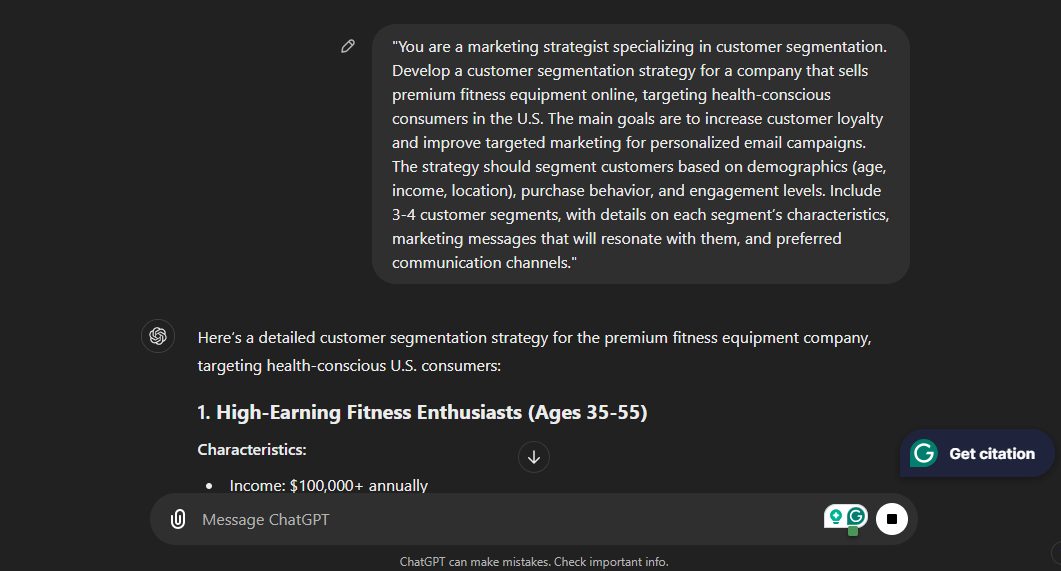
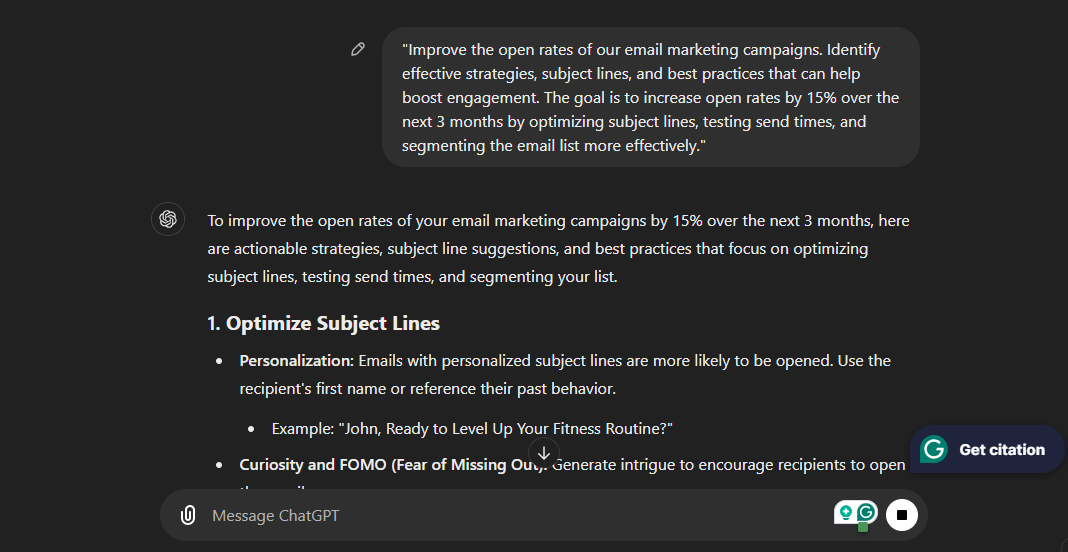
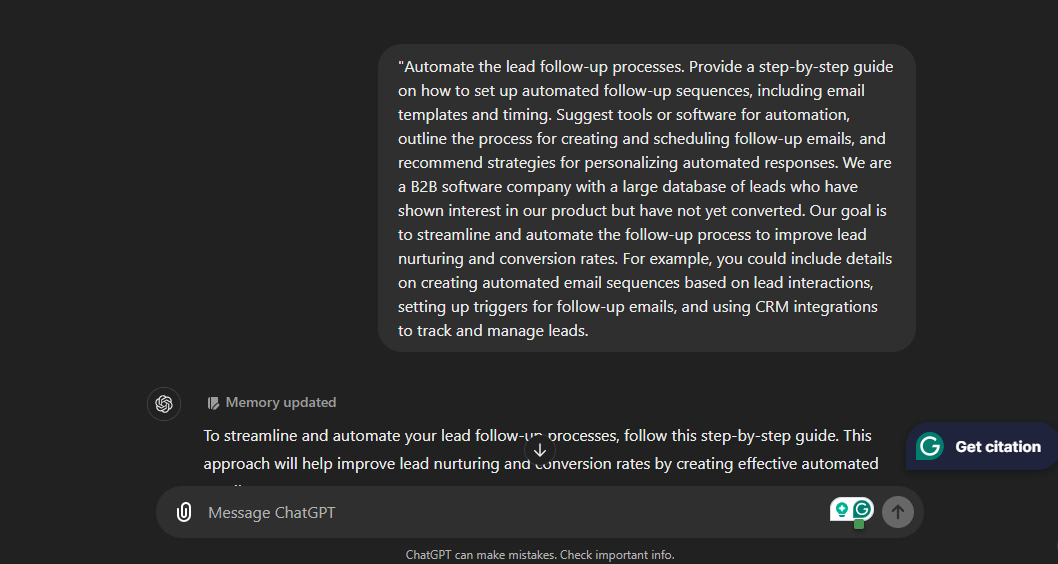
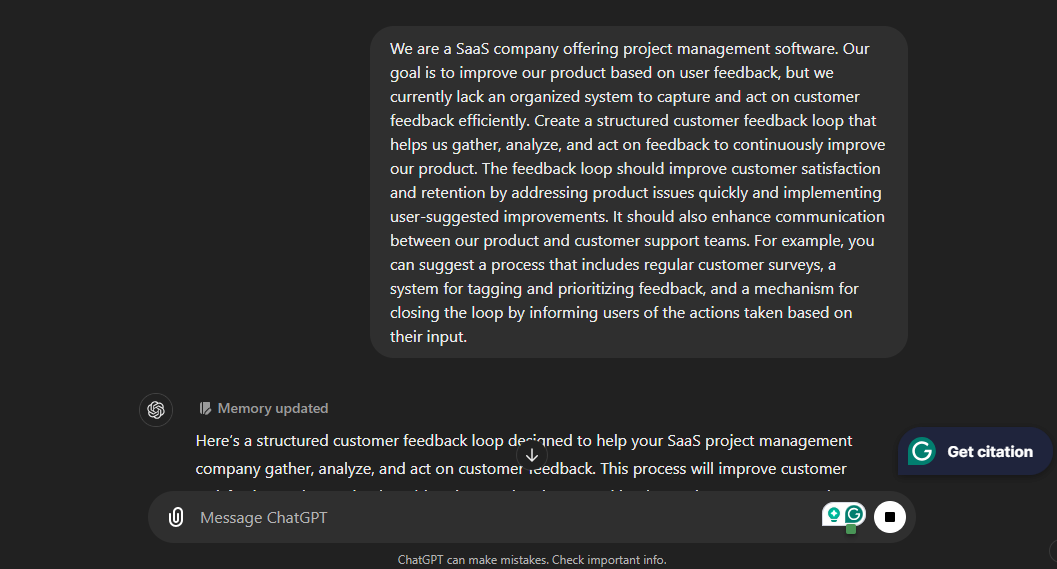
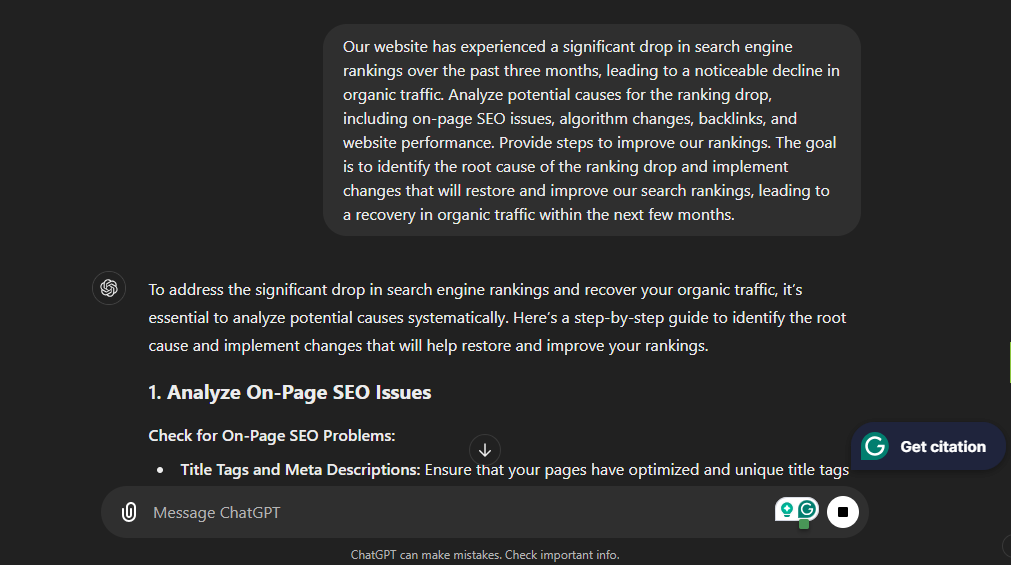
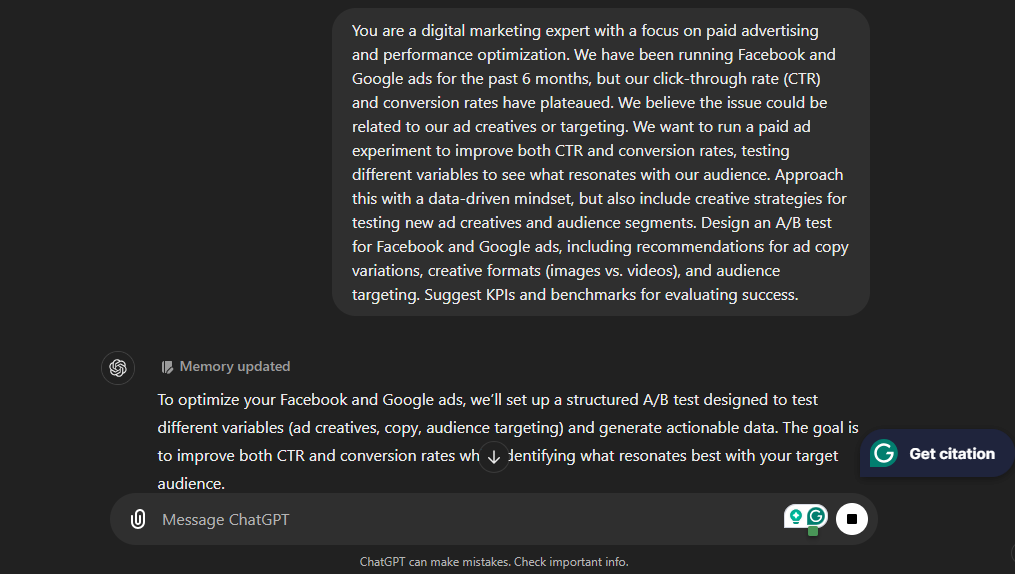
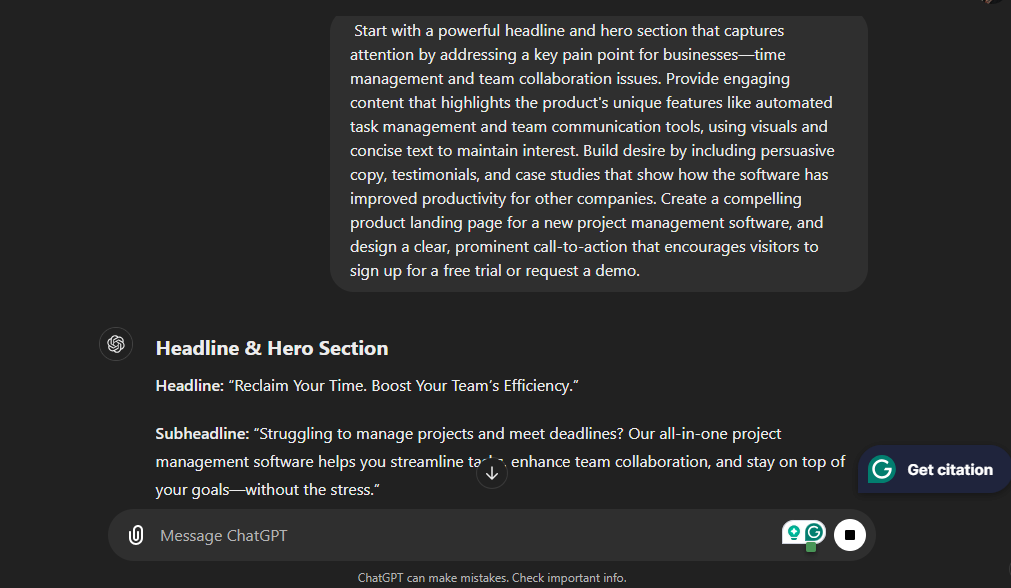
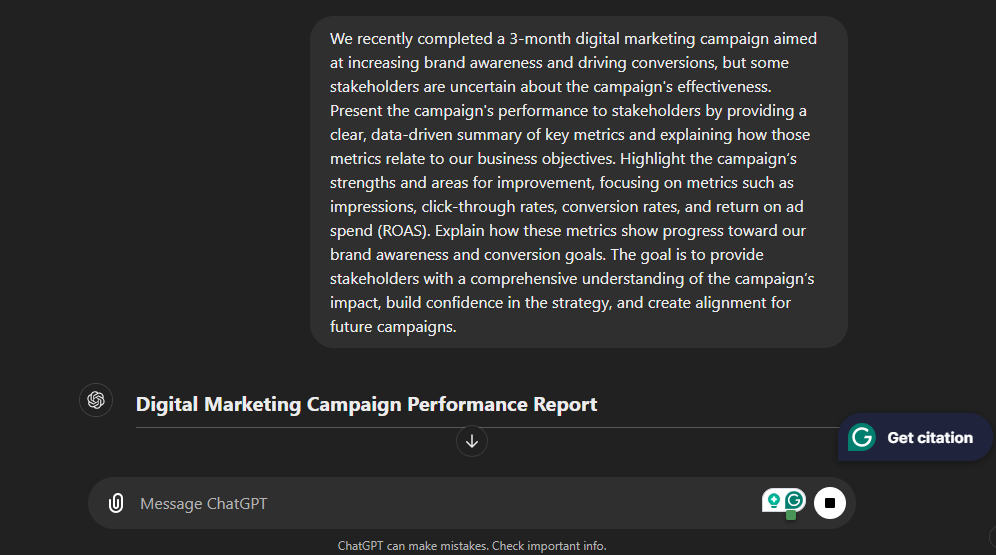
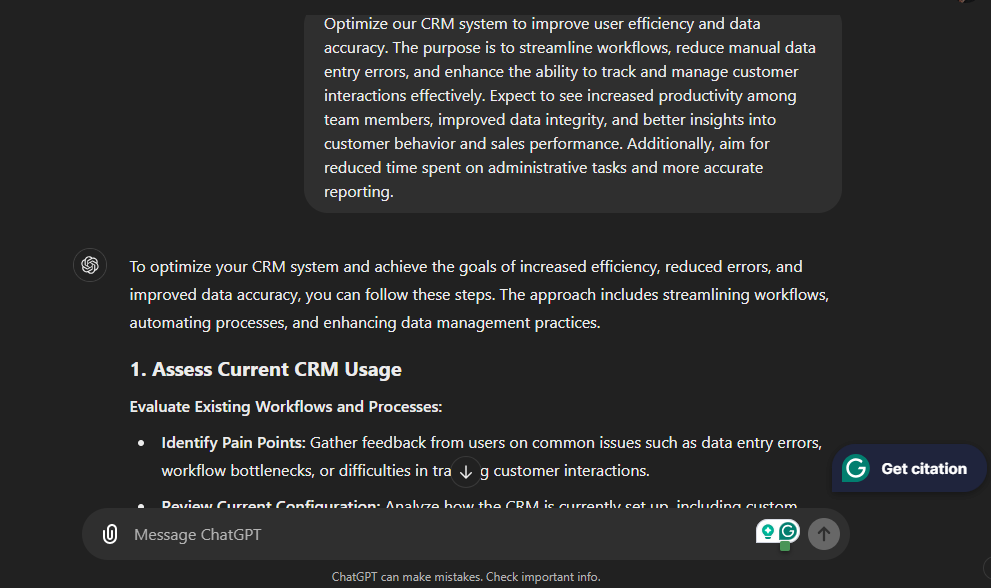
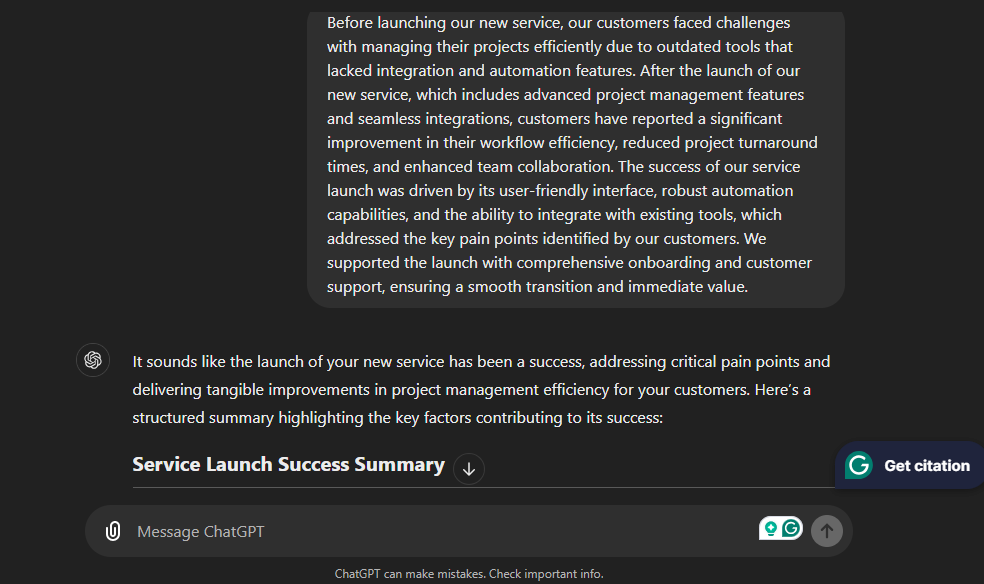
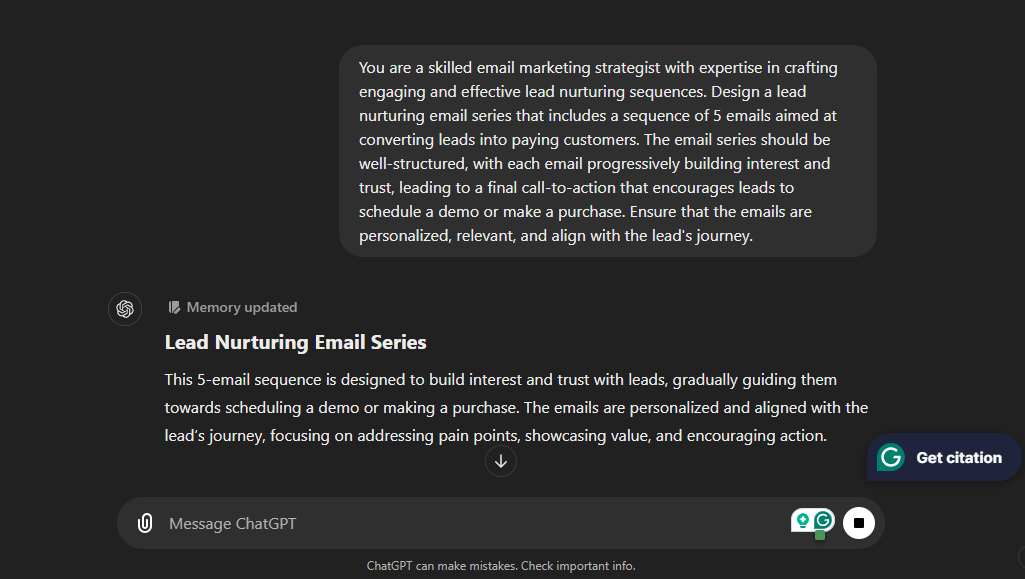
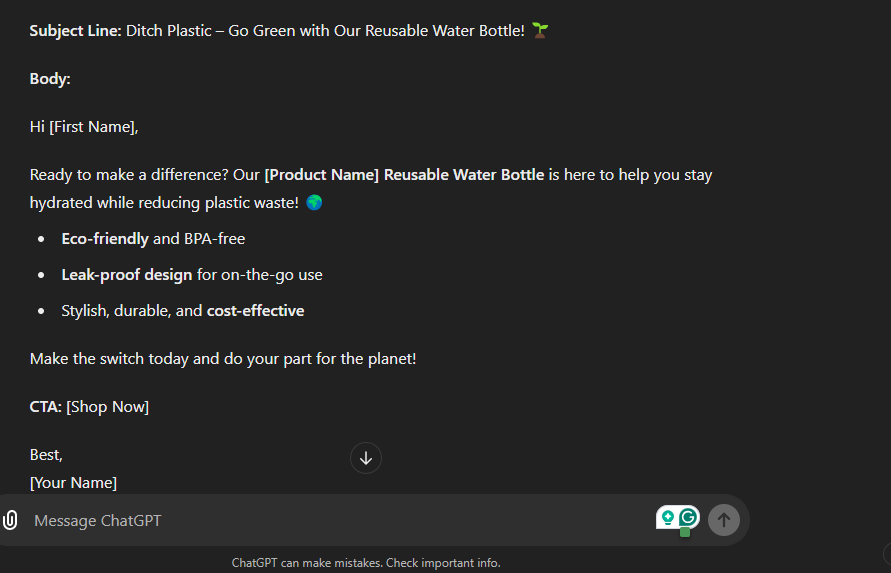
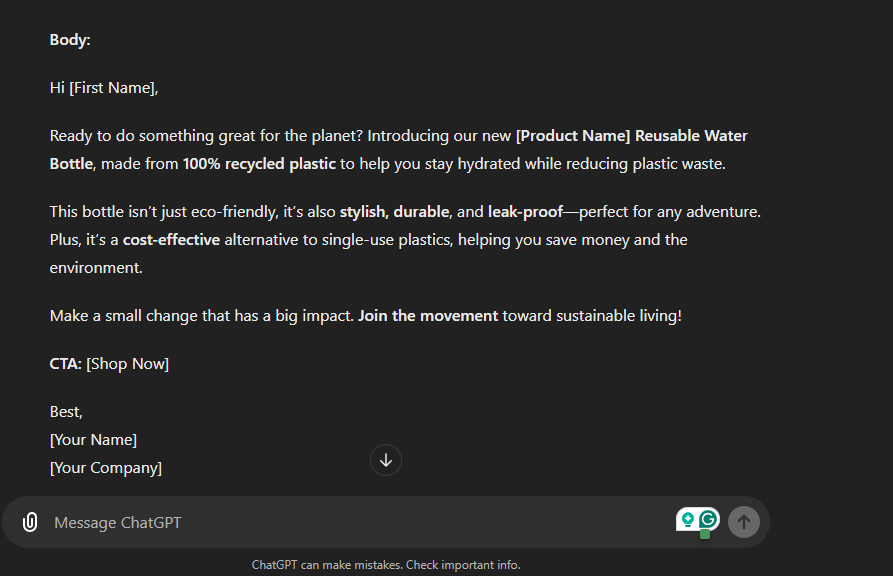













Maab is an experienced software engineer who specializes in explaining technical topics to a wider audience.